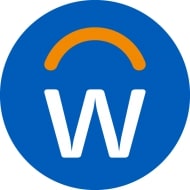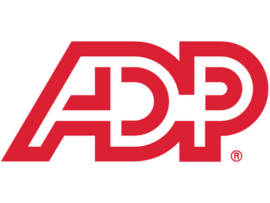
Workday and ADP are two of the most popular payroll management services, both of which offer comprehensive payroll and HR services for businesses of varying sizes and industries. For the most part, ADP’s products — especially its payroll and HR software, ADP Workforce Now — will work better for small businesses than Workday. In contrast, Workday’s more comprehensive HCM features make it a better fit for growing midsize and big businesses.
SEE: Payroll Processing Checklist (TechRepublic Premium)
This product guide will compare Workday vs. ADP to help you make the best decision for your business’s payroll needs.
Jump to:
| Features | Workday HCM | ADP Workforce Now |
|---|---|---|
| Starting price | Custom | Custom |
| Free trial | None | Up to 3 months |
| Unlimited payroll runs | Yes | Yes |
| Automatic tax filing | No | Yes |
| Global payroll | Third-party provider | Add-on feature |
| Benefits administration | Yes | Yes |
| Ideal customer company size | Midsize and large | Small and midsize |
Plan and pricing information is up to date as of 8/8/2023.
As is typical of most HCM software companies, neither Workday nor ADP list their prices upfront. Interested companies will need to reach out to each company’s sales team directly to schedule a custom demo and request a quote.
Workday is a cloud-based human capital management and financial management software provider. It provides global organizations with a single system to manage their entire employee lifecycle, from recruiting, onboarding and talent management to career development, payroll and benefits administration.
Workday offers a variety of products that satisfy the demands of large corporations or organizations with more than 200 employees. Workday’s popular human capital management solution, Workday HCM, includes hiring, onboarding, benefits, employee feedback, career pathing, time tracking and other employee management tools.
Workday HCM integrates with Workday’s other products for users who want to manage all business processes on one unified system. For instance, Workday HCM syncs seamlessly with Workday Financial Management, an enterprise-level accounting software solution.
Workday doesn’t advertise a free trial. As with any HCM system, you should expect Workday’s pricing to be much higher than that of payroll-only products for small businesses.
Learn more about Workday by reading our comprehensive Workday review.

ADP is a payroll, human resources and benefits administration service provider that also offers talent management, time and attendance, HR BPO, retirement services and insurance services for small, midsize and large businesses.
Like Workday, ADP has multiple products that meet a variety of business needs. The one most comparable to Workday is ADP Workforce Now, a combined payroll and HR software program that caters mainly to midsize businesses. Other popular ADP products include the following:
Again, ADP doesn’t list starting prices for any of its plans online, though it does advertise a three-month free trial for new customers.
Learn more about ADP Workforce Now by reading our comprehensive ADP Workforce Now review.
ADP Workforce Now and Workday HCM perform more or less the same basic payroll functions, including automatic payroll runs, direct deposit and employee self-service portals.
Both providers also offer global payroll. While ADP Workforce Now doesn’t have built-in international payroll, customers can add the ADP Global Payroll product to their Workforce Now subscription to pay employees in 140+ countries. Workday offers global payroll through third-party payroll partners that pay employees and contractors in 100+ countries.
Tax filing is a critical component of payroll software. Most HCM software providers include automatic payroll tax calculation, deduction and filing, including end-of-year tax form filing. For instance, ADP’s comprehensive payroll solution includes automatic tax filing for federal, state and local taxes.
With Workday, the tax filing process is outsourced to partners such as Alight Solutions, everBe, HRPath, NorthgateArinso and OneSource Virtual. This approach may work for some employers; however, it does mean the employer is trusting an additional third party to accurately complete tax payment and filing in a timely fashion.
Both Workday and ADP offer the ability to manage and track employee benefits, including health insurance and retirement plans.
ADP provides a comprehensive benefits administration solution that includes the ability to manage and track employee benefits and customize and adjust benefits as needed.
Workday provides a benefits administration solution that combines HR data with a benefits package. It also syncs benefits with employee status changes, such as new hires, salary increases and promotions. With Workday, employers can manage and track employee benefits and customize and adjust benefits.
Both ADP and Workday offer comprehensive and fairly equivalent benefits administration solutions for users who want to manage, track, customize and adjust employee benefits. The deciding factor may be the cost of implementation and the overall support offered by each vendor.
Both ADP and Workday offer comprehensive support for their users. ADP provides automated phone support for basic questions and an online resource center with how-tos, webinars and FAQs. Its higher pricing tiers include dedicated support representatives.
On the other hand, Workday assigns a dedicated customer success manager who will onboard users and act as their contact person. They also offer community support and 24/7 online expert support.
Users who need immediate assistance and prefer a more personalized solution may find Workday’s dedicated customer success manager and 24/7 online expert support more beneficial. Those who want a more self-service approach and are comfortable with online resources may find ADP’s automated phone support and online resource center preferable.
ADP and Workday are robust HR and payroll solutions that can help streamline and automate processes. Both platforms offer powerful features and have earned high marks for customer satisfaction.
ADP’s basic features are generally easy to use and require minimal training. These features include a range of payroll and HR tools, such as employee self-service, payroll processing, and time and attendance tracking. Advanced features like workforce analytics and reporting may require additional training.
Workday provides an easy-to-use, organized interface with streamlined processes, well-structured menus and sub-menus. Workday’s user-friendly features are ideal for users who are new to HR and payroll software or those who are looking for a simple way to manage their organization’s HR and payroll needs.
Overall, both ADP and Workday offer robust, easy-to-use features. Workday’s modern, streamlined interface may be the better choice for less experienced users, but for those with more complex tooling needs, ADP may be the better option.
To evaluate ADP Workforce Now and Workday HCM, we considered how both products performed in the following key categories:
Our research process involved testing demo accounts whenever possible, reading and watching customer reviews from sites like Gartner Peer Insights, downloading apps and reading product spec sheets.
The choice between ADP and Workday depends on various factors, including the size of your organization and its specific payroll and HR needs.
ADP is a well-established provider, offering an extensive range of HR services and features, including payroll, benefits administration, time tracking, recruiting and performance management. It is a good choice for growing businesses that are scaling quickly, as it offers a comprehensive suite of services and is able to scale according to an organization’s evolving needs.
On the other hand, Workday is an enterprise-level solution that is best suited for medium-sized and larger organizations. It is also simpler to configure and use than ADP and offers a more intuitive user interface. Workday is a good option for enterprises that want an easy-to-use solution with features and tools to improve employee engagement and productivity.
Ultimately, the choice between Workday and ADP comes down to your organization’s specific payroll needs and budget. Both ADP and Workday offer a range of features and services that can be tailored to meet your requirements, but it is essential to weigh the pros and cons of each system before making a final decision.
Workday and ADP are two of the best payroll and HCM solutions for midsize businesses and larger corporations. While it’s hard to say which one is objectively better, Workday HCM is best for bigger businesses with hundreds of employees and complex HR needs. ADP, especially ADP Workforce Now, is a better choice for smaller and midsize businesses with up to 150 employees and more straightforward HR requirements.
Generally speaking, ADP Workforce Now is cheaper than Workday HCM, which makes it a better pick for midsize businesses on a budget.
Workday HCM and ADP Workforce Now are close competitors in the human capital management software space. However, each company has a slightly different — though occasionally overlapping — audience: While Workday targets bigger corporations, ADP Workforce Now can be adapted to meet the needs of midsize and large businesses, including international corporations.
Workday and ADP are two business software companies that offer payroll, accounting, HR and other tools that are essential for personnel management in the modern workplace.
Read next: The Best Payroll Software for Your Small Business (TechRepublic)
Rippling is the first way for businesses to manage all of their HR, IT, and Finance — payroll, benefits, computers, apps, corporate cards, expenses, and more — in one unified workforce platform. By connecting every business system to one source of truth for employee data, businesses can automate all of the manual work they normally need to do to make employee changes.